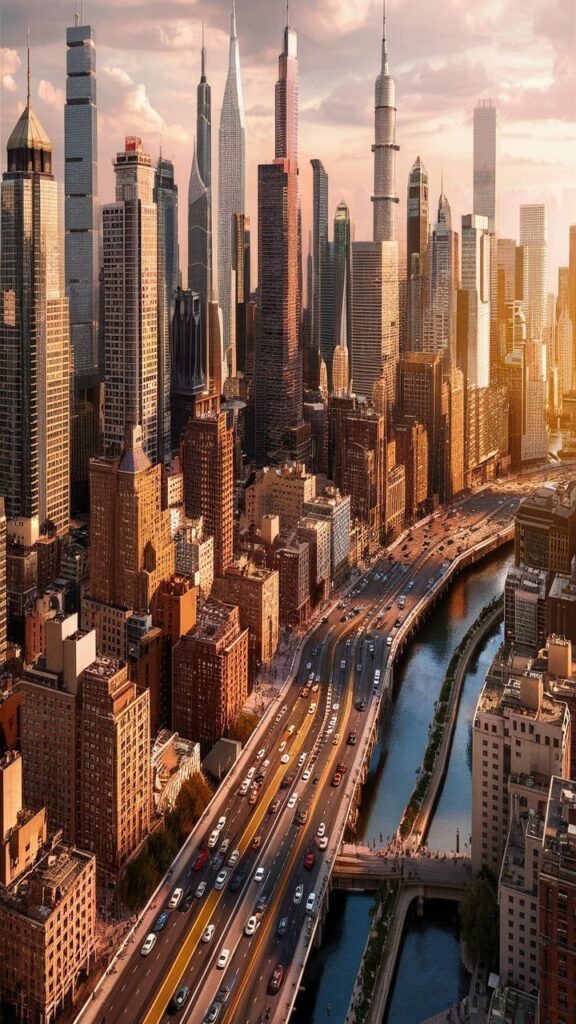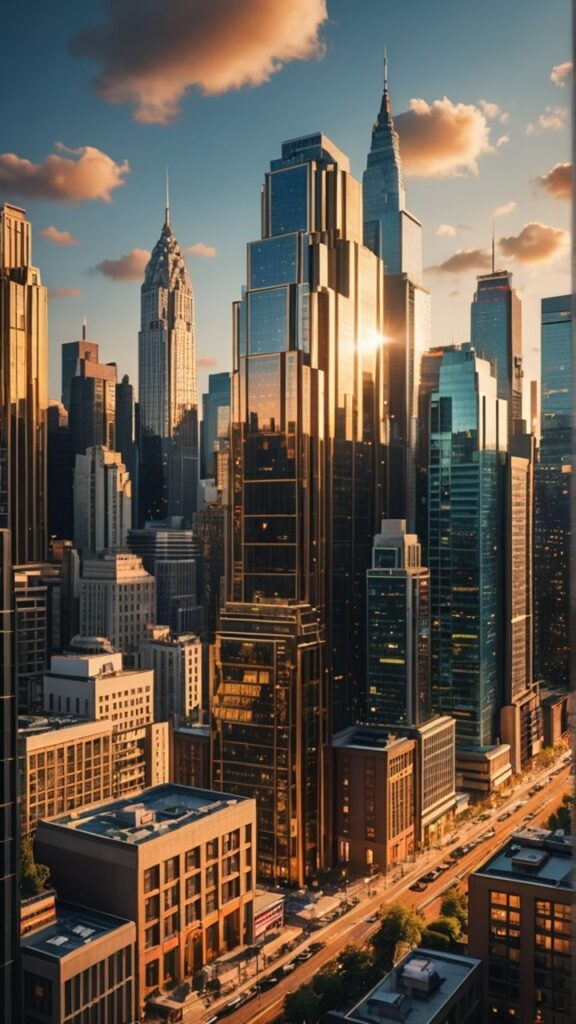
Introduction: China’s Vertical Revolution Architecture
Urbanization is a defining trait of modern civilization. With billions of people living in cities worldwide, the question of how to use limited land effectively becomes increasingly urgent. China, home to more than 1.4 billion people, is pioneering an answer to this challenge through the development of cities above cities—a concept that’s not only visionary but also rapidly becoming a reality.(Architecture)
These vertical cities aren’t just skyscrapers. They’re self-contained ecosystems that combine residential, commercial, recreational, and transportation facilities—all stacked vertically within massive, intelligently designed structures. In this article, we’ll dive into what “cities above cities” means, why it matters, and how China is leading the charge into a bold new era of urban living.
What Are “Cities Above Cities” in China?
“Cities above cities” refers to high-density, multi-layered urban environments built vertically rather than horizontally. These aren’t just tall buildings with apartments or offices—they’re complex mega-structures that function like mini-cities. Each level may feature schools, hospitals, shopping centers, parks, and transportation hubs, allowing residents to live, work, shop, and play—all without ever leaving the building.
The core philosophy behind vertical cities is maximizing land efficiency while minimizing the environmental and social problems caused by urban sprawl.
Why Is China Building Cities Above Cities?

1. Population Density and Land Scarcity
China’s megacities like Beijing, Shanghai, Shenzhen, and Chongqing are experiencing intense urban growth. The demand for housing, transportation, and public services has skyrocketed. Yet land is a finite resource. Instead of expanding outward—which often means destroying farmlands and displacing rural communities—China is building upward.
2. Combating Traffic and Pollution
Traffic congestion and air pollution are among the most serious problems plaguing Chinese cities. By consolidating services and transportation within vertical structures, the need for long-distance commuting is significantly reduced. Residents can walk between levels instead of driving across town, easing pressure on roads and reducing carbon emissions.
3. Pioneering Smart Urbanization
China is heavily investing in smart city technologies, integrating AI, big data, IoT, and green energy systems. Vertical cities serve as ideal platforms for these innovations, enabling centralized management of utilities, air quality, waste, and traffic systems.
Case Study: Chongqing – The Most Famous Vertical City in China
Chongqing, one of China’s largest municipalities, is perhaps the best example of a city above a city. Known for its stunning topography and rapid vertical development, Chongqing’s layout is unlike any other city on Earth.
Highlights of Chongqing’s Verticality:
- Multi-layered highways: Roads in Chongqing overlap like a 3D puzzle. Some highways are built above residential areas, and others run beneath pedestrian walkways or even through buildings.
- Monorail through a residential building: The city’s Line 2 light rail famously passes through a 19-story apartment complex in Liziba Station, without disturbing the residents.
- Terraced urban design: Built on mountainous terrain, the city incorporates elevation as part of its infrastructure, allowing streets, parks, and buildings to be constructed on top of each other.
Chongqing is a real-world prototype of vertical urbanism, showing how engineering and city planning can harmonize with nature and modern needs.
Vertical Architecture: The Backbone of China’s Urban Future
1. Multi-Use Mega-Structures
In vertical cities, skyscrapers serve more than a single purpose. You’ll find residential zones on higher floors, commercial outlets on middle levels, and public facilities like clinics, gyms, and community centers near the base. Some buildings even feature rooftop farms or vertical gardens to enhance self-sufficiency and reduce environmental impact.
2. Green Building Technology Architecture
Many Chinese vertical cities utilize green technologies such as:
- Solar panels and wind turbines
- Rainwater harvesting systems
- Natural ventilation designs
- Smart lighting and temperature regulation
These features help vertical cities reduce their ecological footprint while offering a higher quality of life for inhabitants.
The Role of Smart Technology in Vertical City Architecture
The integration of smart technologies plays a key role in making vertical cities efficient and livable. China’s vertical megastructures often include:
- Smart elevators that track traffic patterns to minimize wait times.
- AI-based traffic control for indoor roadways and sky bridges.
- Facial recognition access systems for building security.
- Centralized waste and water management systems.
- Smart grids that optimize energy consumption.
By connecting various systems under one digital infrastructure, these buildings operate like living, breathing entities—constantly adjusting to the needs of their occupants.
Social and Cultural Impact of Cities Above Cities Architecture
1. Redefining Community Living
Vertical cities create tightly-knit communities. Residents are more likely to interact with their neighbors in shared spaces, such as rooftop parks, indoor plazas, or communal cafeterias. This reinvents urban social life, creating a sense of togetherness often lost in large, sprawling cities.
2. Accessibility for All Ages
By integrating schools, clinics, and playgrounds within the structure, vertical cities provide a high level of accessibility to children, the elderly, and people with disabilities, eliminating the need for external transportation.
3. Urban Lifestyle Without Commute
Workspaces, gyms, cafes, and entertainment zones are often just a few floors away. This eliminates the need for long commutes, freeing up personal time and improving work-life balance.
Challenges and Limitations of Vertical Urbanism in China
While the concept of “cities above cities” is innovative, it doesn’t come without its challenges.
1. High Construction and Maintenance Costs
Vertical cities require cutting-edge technology and engineering, making them expensive to build and maintain. These costs can limit scalability and affordability for the average citizen.
2. Risk of Social Segregation
If not carefully managed, vertical cities may unintentionally create class-based zoning, where wealthier individuals live in upper, better-maintained areas, while lower-income residents are pushed to lower, less-desirable levels.
3. Psychological Effects
Living in a highly vertical environment with limited access to nature or natural light can have psychological effects, such as feelings of isolation or disorientation, especially for residents in dense, closed-off units.
China’s Flagship Vertical Projects: A Look Into the Future
🔹 Sky City (Changsha)
Originally designed to be the tallest building in the world at 838 meters, Sky City was planned to house more than 30,000 people with its schools, hospitals, and offices. Though the project faced delays, it exemplifies the ambition behind China’s vertical urbanization.
🔹 Forest City (Guangdong)
Developed with the concept of “green skyscrapers,” Forest City buildings are covered in more than 100 species of plants, aimed at reducing pollution and increasing biodiversity in urban areas.
🔹 Qianhai Hub (Shenzhen)
A smart vertical city concept in development, the Qianhai hub integrates finance, transportation, and residential zones within a single interconnected framework.
Vertical Urbanization: Inspiration for the World?
China’s success in building cities above cities has caught the world’s attention. Nations like India, Indonesia, Brazil, and even the United States are studying the model as a potential solution to their urban woes. As the global population continues to rise, vertical cities may become the norm rather than an exception.
Conclusion: The Sky Is No Longer the Limit
“Cities above cities” in China is more than a fascinating concept—it’s a bold step into the future. By combining vertical architecture, smart technologies, green solutions, and efficient planning, China is creating urban environments that are both scalable and sustainable.
This model may not be perfect, and it still requires refinement in terms of cost, equity, and psychological design. But one thing is clear: the future of urbanization is vertical, and China is already living in it.














